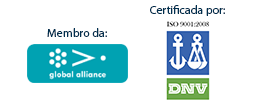On Demonstrating PR's Effectiveness
I’ve been spending quite a lot of time lately writing on public relations effectiveness and how we can demonstrate our impact to the client—be that client internal (corporate) or external. Working with Dr. David Michaelson, president of Echo Research USA, on a new book that takes a “Best Practice” (yes, capital B, capital P) approach to the profession (yes, profession—more on that in a minute).
What does it take to become a Best Practice professional? From a research POV it means that the communication professional understands both the worlds of social science and humanities; he must have feet in both worlds and mastery of at least one! Best Practices come from an in-depth knowledge of how public relations operates in different environments and how to collect research that compliments and explains how people—target audiences—operate in those environments.
It also means that for each and every client, internal and external, that all public relations programs have a strong developmental phase prior to kicking off a campaign. This means that secondary research is a must and as the professional specializes builds a personal library of case histories and case strategies, as well as numerous volumes on psychology, communication theory, sociology, and anthropology—all as related to the business world.
Why the business world? Here is where I differentiate between the “practitioner” and the “professional.” The practitioner is a technician—can write well, can produce copy, and generally can take orders and put them into action. The professional on the other hand is the strategist; oh, she has mastered the technical aspects but has moved on to providing strategic communication expertise as a value-added commodity to her portfolio. As such, she takes on the role that the early public relations counselors took but in the years after World War II seem to have lost to advertising and marketing.
A professional is more than a technician. He or she has advanced training and knowledge of business, but from a communication POV—an understanding of public opinion, persuasion, culture, and of course promotion.
Over the next few issues I’ll be expanding more on this. Until then, ask yourself—are you a public relations/corporate communications professional or are you still stuck in the technician role?
Os artigos aqui apresentados n�o necessariamente refletem a opini�o da Aberje
e seu conte�do � de exclusiva responsabilidade do autor. 3342
Outras colunas de Don Stacks 
03/12/2009 - On Demonstrating PR's Effectiveness












